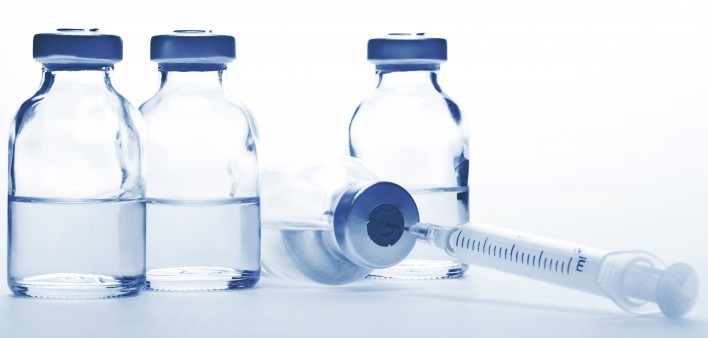If individuals start the investigational long-acting injectable cabotegravir as pre-exposure prophylaxis (PrEP) against HIV when they have very recently contracted the virus, they may be at risk for developing drug-resistant virus. This is according to a recent study conducted in rhesus macaque monkeys.
Investigators recently began recruiting high-risk HIV-negative participants to a massive global trial of the long-acting injectable cabotegravir as PrEP. Those in the double-blind trial who are randomized to the cabotegravir arm (as opposed to the arm receiving standard, daily oral Truvada (tenofovir disoproxil fumarate/emtricitabine) as PrEP) will receive two injections spaced four weeks apart and then an injection every eight weeks for an average of about three and a half years.
People who contracted HIV in trials of Truvada as PrEP infrequently developed drug-resistant virus. Most of those who did were acutely (very recently) infected with HIV when they entered the trials. (When HIV infection is very new, it can evade standard antibody tests for the virus, resulting in a false negative result and in these cases the mistaken qualification of an individual for a PrEP trial despite the fact that they had HIV.)
Long-acting injectable cabotegravir has a very long “tail,” meaning it can linger in the body for more than a year in some cases. This phenomenon may raise the risk of drug resistance. After drug levels drop below the threshold needed for maximum HIV protection and before the drug is out of the system, individuals could contract the virus but still have enough drug in their bodies to prompt drug resistance.
To counteract the risks posed by injectable PrEP’s tail, the global trial will provide participants a year of daily oral Truvada after their last injections.
The new study in primates does not directly address the concerns of drug resistance related to long-acting cabotegravir’s tail but rather those related to starting the drug during acute HIV infection.
Gerardo Garcia-Lerma, PhD, of the Centers for Disease Control and Prevention (CDC) presented of the findings from the study were presented at the 2017 Conference on Retroviruses and Opportunistic Infections (CROI) in Seattle.
The researchers intravenously infected six rhesus macaques, three females and three males, with SIV, HIV’s simian cousin. Nine days later (before the monkeys developed antibodies to the virus and would thus accurately test positive to a standard SIV antibody test), they injected the animals with long-acting cabotegravir. They gave the monkeys two subsequent injections every four weeks in order to maintain drug levels on par with the protective levels achieved with injecting humans every eight or 12 weeks and with levels previously found to confer protection against rectal and vaginal infection of SIV among macaques. They tested the animals’ drug concentrations weekly in their plasma and rectal and vaginal fluis.
The investigators found that the concentration of cabotegravir in the monkeys’ plasma remained at protective levels throughout the first 16 weeks after the first injection and were detectable until week 27 of the study. The drug concentrations were at protective levels in rectal but not vaginal fluids for weeks one through 15.
The median viral load at the time of the first cabotegravir injection was about 63 million. It then fluctuated between undetectable (under 50) and about 16,000 throughout weeks one through 16 of the study and ultimately plateaued at about 10,000 by week 19.
Analysis of the integrase genetic sequence of SIV in the animals (cabotegravir belongs to the integrase inhibitor class of antiretrovirals) showed that the virus of three of the six macaques had emerging resistance mutations. One of them had the mutation called G118R/A122T at weeks eight through 23 of the study; one had the mutation E92G at week 20; and one had the mutation E92Q/G140R at weeks 12 through 19 and then the mutation Q124R at weeks 22 through 26.
The researchers also found the G118R/A122T and E92Q mutations in viruses in vaginal and rectal fluids. This finding raises the concern that cabotegravir-prompted drug resistance could be transmittable through anal or vaginal sex.
Further genetic analysis, specifically phenotypic testing, is needed to determine how the mutations identified in the study may confer resistance to cabotegravir.







Comments
Comments